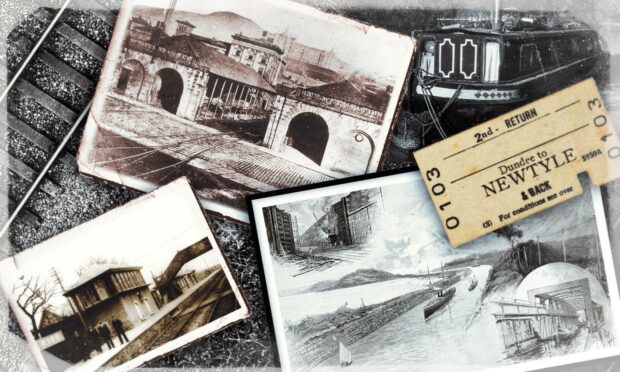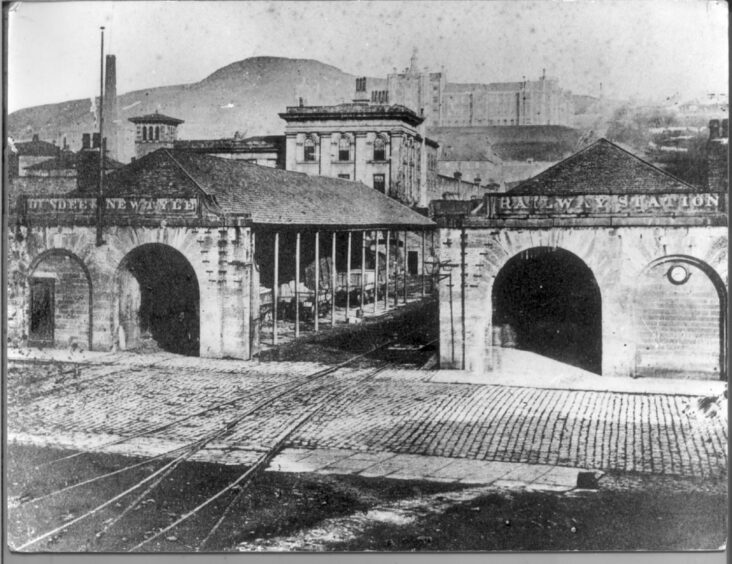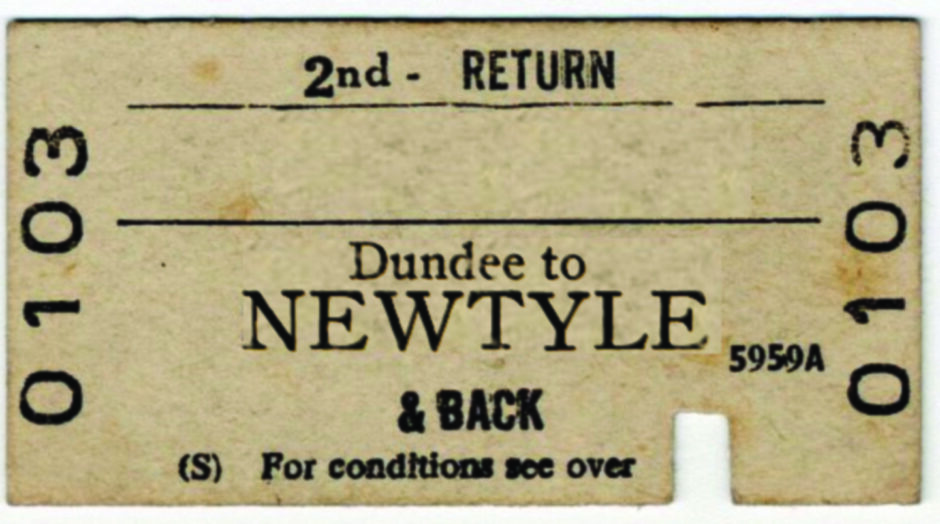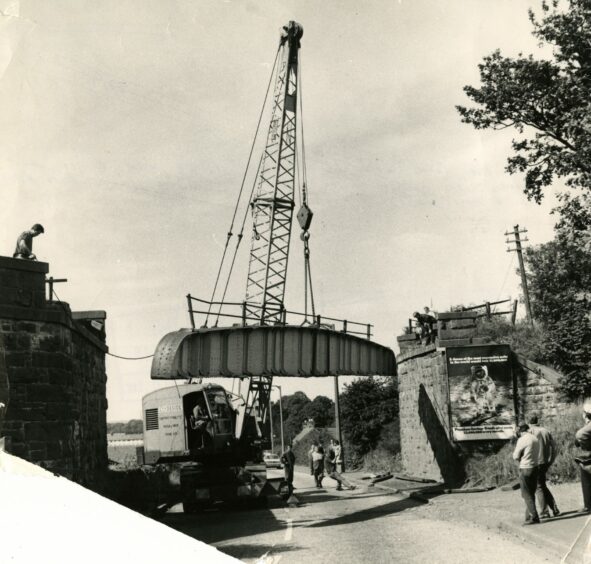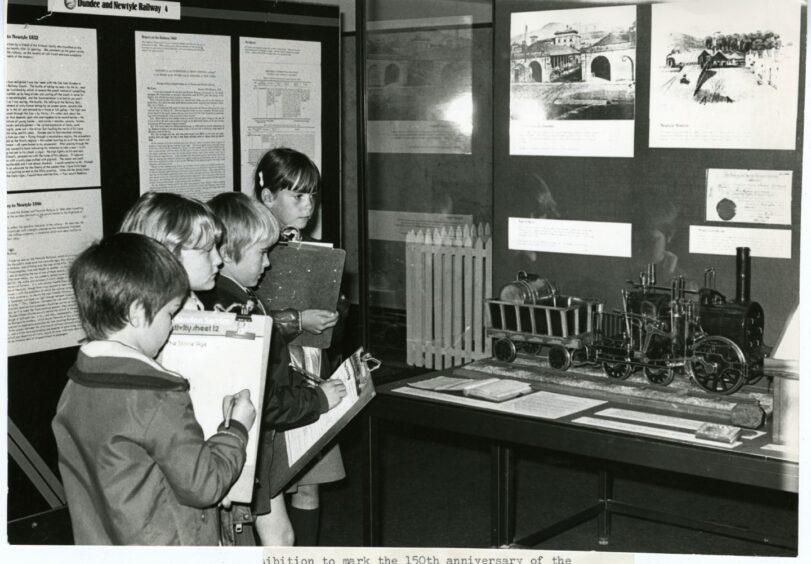Ambitious plans were once drawn up to construct a man-made waterway between Dundee and Forfarshire.
A canal to link Dundee and Strathmore was mooted in the 1800s but there were geographical obstacles to that and they turned to a railway instead.
The Sidlaws were a major problem to any canal linking Dundee and Strathmore, and, although alternative ideas of a similar waterway from Perth to Forfar had been mooted, these were never sufficiently advanced.
Impractical
Using horse and cart to deliver goods by road took too long.
Something was needed because of the expansion of Dundee as a city and the increased demand for some goods and resources.
In particular there was a need for more water for the growing linen industry to use for bleaching.
Some products were being sent deep into Angus and Perthshire for bleaching.
A railway could surmount the Sidlaws problem after the council were fairly quickly told by engineers such a canal was impractical.
Dr Kenneth Baxter, archives assistant at the University of Dundee, said: “Of course this was the point when railways were just taking off and it was beginning to be realised that they had the potential to be both cheaper and faster than canals.
“Another drawback for building any canals in Tayside were that there were no nearby canals they could link up with as part of a larger system.”
The Dundee and Newtyle Railway Company was formed in 1826 and in the following years tenders were invited for engineering works.
The line was run from the station at Ward Road and terminated at Newtyle, which, at that time, was little more than a mill and a few houses.
In between lay plenty of difficulties.
The route of the line took it up three steep inclines, and a tunnel had to be dug directly through the Law in Dundee, a project dogged by accidents.
It was successful when it started in terms of the amount of traffic using the line, but in fact it struggled over time because it had cost so much more to build than they had imagined.
The service eventually commenced on December 16 1831, making it one of the earliest in commercial operation in the world.
An extract from The Dundee Courier at the time stated: “The railway betwixt this town and Newtyle has at length been opened.
“On Friday last (16th) carriages started for the first time for the conveyance of goods and passengers. The distance from Newtyle to the temporary place of starting (it would later move from Dundee’s Ward Road to the harbour) is nearly 11 miles, and was gone over in about an hour-and-a-quarter, conveying along with it about 40 passengers.”
The train initially consisted of stationary engines positioned at three inclines which hauled the carriages uphill by ropes.
On level ground, the carriages were drawn by horses.
Dundee brothers
From 1831 to 1849 the fare from Dundee to Newtyle was one shilling and sixpence first class and one shilling second class.
It had been anticipated by the planner of the railway, Charles Landale, that there would be an equal flow of freight in both directions.
In the end, the balance tipped one way, with more goods going from Dundee out to Newtyle than the other way around.
However, passengers soon provided the majority of the income.
Locomotive engines came on to the line to replace the horses in 1833, making them among the very first train engines to be put into use in Scotland.
Built in Dundee by James and George Carmichael, the locomotives were the first to run in Scotland.
The brothers became widely known for their genius as engineers and helped to cement Dundee’s reputation as an engineering centre.
The average speed of the trains was around nine miles per hour and the full journey of 11 miles from Dundee to Newtyle could take over an hour and a quarter.
Goods transported included cinders, hay, iron, flax, coal, lime, potatoes, grain, manure, stone and slate as well as ale, silks and gold plate.
In 1846, the railway was saved from bankruptcy by being leased to the Dundee and Perth Railway.
Standard gauge was adopted in 1849 and during the 1860s deviation lines were opened to avoid the three inclines which fell into disuse.
It would subsequently be improved and diverted, and the impact of this mini-trade route would shift.
The line was absorbed by the Scottish Central Railway Company in 1863, which in turn was taken over by the giant Caledonian Railway Company in 1865.
Despite its difficulties, the Dundee to Newtyle service ran in some form or other for well over a century, and while it may have struggled financially itself in its early years, it undoubtedly helped the economies and infrastructure of both Dundee and the Strathmore area.
Stiff rules
The rules were many and extremely stiff for employees.
The least lapse brought a fine or dismissal.
Smiths and wrights, having repaired any waggon or carriage, had to be careful in erasing any mark denoting that such waggon or carriage required repair.
In 1934 any servant of the company caught smoking in any of the depots would be instantly dismissed or fined a sum of up to £5.
As motor transport developed and roads improved, the need for rail in certain areas decreased.
Passenger operations ceased in 1955, with some goods services continuing to run for a short period after, but evidence of the line can still be seen, including the entrance to the tunnel under the Law, which during the second world war was actually converted to use as an air raid shelter.
Freight services continued, but the Auchterhouse-Newtyle section closed in 1958, and the remaining route to Dundee ceased operation on April 5 1965.
In Dundee, Cross Roads Station survives as a small cottage with a space for a clock over the door.
In Newtyle, the old station survives, and along the lines remain various cuttings, embankments and signal houses.
Much of the line is seeing a new lease of life as walking and cycling routes — the Newtyle Path Network, Sidlaw Path Network and Dundee’s Green Circular.
More like this:
A fond farewell from Fife to the Union of South Africa steam locomotive
The end of the line for the Bervie to Montrose passenger train 70 years ago
